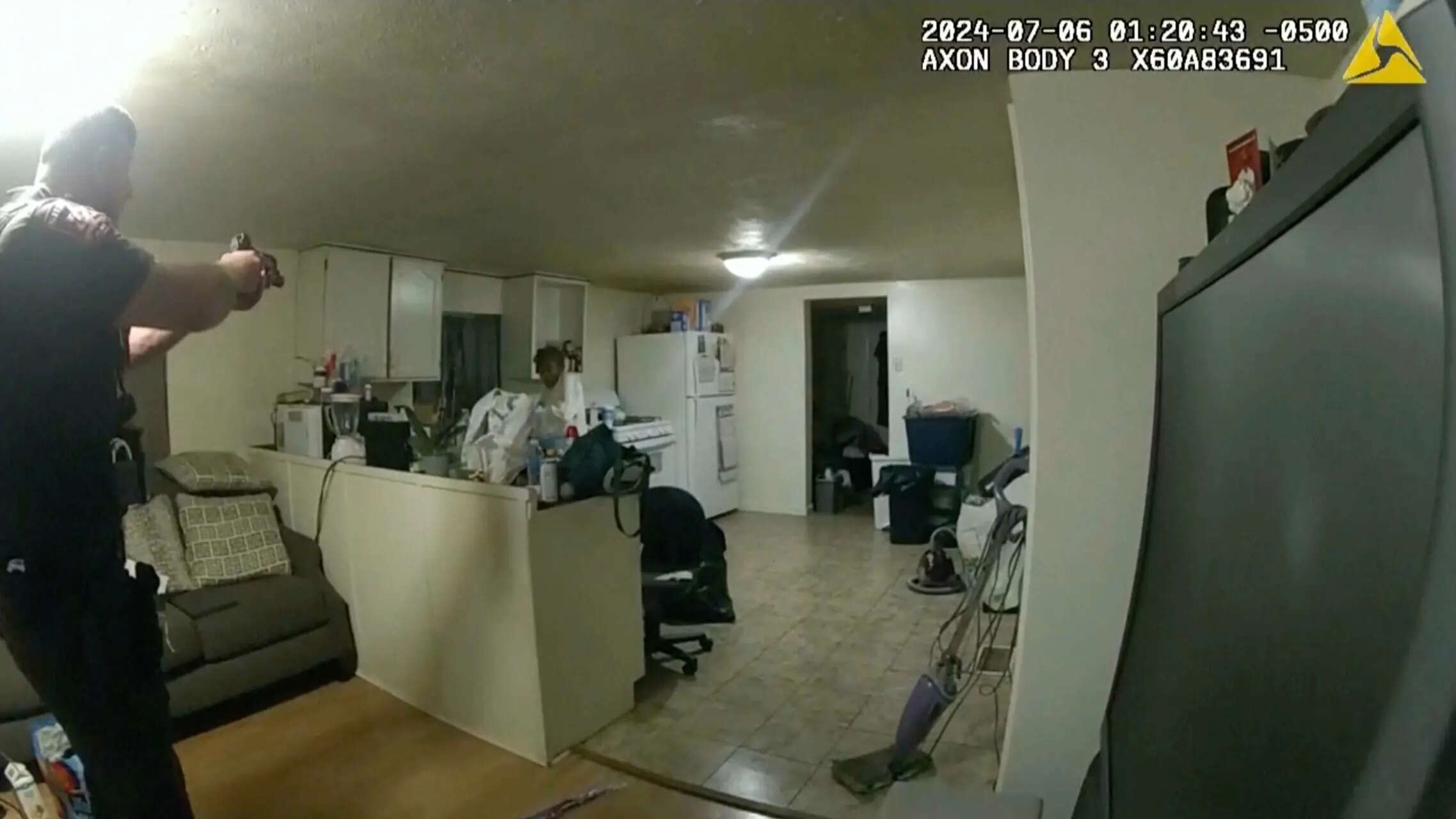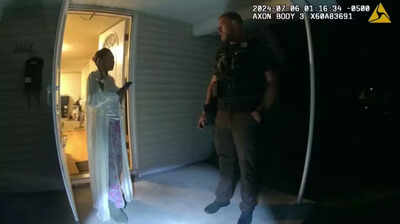When 36-year-old Sonya Massey dialled 911 from her Springfield, Illinois home in July 2024, she wasn’t calling for confrontation — she was calling for help. Minutes later, a white sheriff’s deputy, Sean Grayson, shot her in the head. This week, after more than a year of protests and political fallout, Grayson was convicted of second-degree murder, reigniting a national debate over police accountability and systemic racism in America.
Driving the news

FILE – In this image taken from body camera video released by Illinois State Police on Monday, July 22, 2024, former Sangamon County Sheriff’s Deputy Sean Grayson, left, points his gun at Sonya Massey, who called 911 for help, before shooting and killing her inside her home in Springfield, Ill., July 6, 2024. (Illinois State Police via AP, file)
A Peoria County jury on Wednesday found former Sangamon County deputy Sean Grayson guilty of second-degree murder for fatally shooting Massey, an unarmed Black woman who had reported a prowler outside her home. The incident was caught partly on body camera footage — though Grayson’s own camera was switched on only after the shooting. He faces up to 20 years in prison, with sentencing set for January 29, 2026.The footage shows Grayson threatening to shoot Massey after she made a religious statement — “I rebuke you in the name of Jesus” — before firing three rounds, one of which struck her in the head.
Why it matters
Massey’s killing has become a new flashpoint in America’s long struggle with police violence, echoing the racial trauma of the 2020 killings of George Floyd, Breonna Taylor, and Ahmaud Arbery. Her death — and the leniency of the verdict — has been denounced by activists and family members as another example of the system’s failure to deliver full justice.Her father, James Wilburn, called the verdict “a miscarriage of justice,” while community groups formed the so-called “Massey Commission” to campaign against racial bias in law enforcement and local governance.
The details
The 911 call: Massey reported a suspected prowler at around midnight on July 6, 2024. Two deputies — Grayson and Dawson Farley — arrived and found signs of a car break-in but no intruder.The fatal encounter: When Grayson noticed a pot boiling on the stove, he told Massey to remove it. As she moved the pot to the sink, he backed away, saying he didn’t want “hot, steaming water” thrown on him. After she uttered a religious rebuke, Grayson drew his gun, threatened her, and fired.Aftermath: Farley tried to render first aid, but Grayson told him not to bother. Massey was pronounced dead soon after.Bodycam failure: Grayson’s body camera was off during most of the interaction, violating department policy. He activated it only after shooting. Farley’s footage captured the entire episode.
The bigger picture
Mental health crisis: Just a day before the shooting, Massey’s mother had called 911 to request help for her daughter, warning that she was in a mental health crisis. That information was never relayed to deputies.Flawed hiring system: Records show Grayson had two DUI convictions, an Army discharge for misconduct, and a history of erratic behaviour across five police agencies. The case prompted Illinois Governor JB Pritzker to sign a new law mandating deeper background checks in police recruitment.Institutional fallout: The Sangamon County sheriff who hired Grayson resigned amid public anger.Cultural resonance: The case has reignited discussions about race, policing, and accountability, testing whether post-Floyd reforms have changed anything substantive.
The takeaway
Grayson’s conviction may mark a rare moment of accountability, but the second-degree verdict has left the Massey family and much of America unconvinced that justice was done. For many, her death underscores how little has changed since 2020 — that in moments meant for help, Black Americans still risk being killed for calling 911. Go to Source



